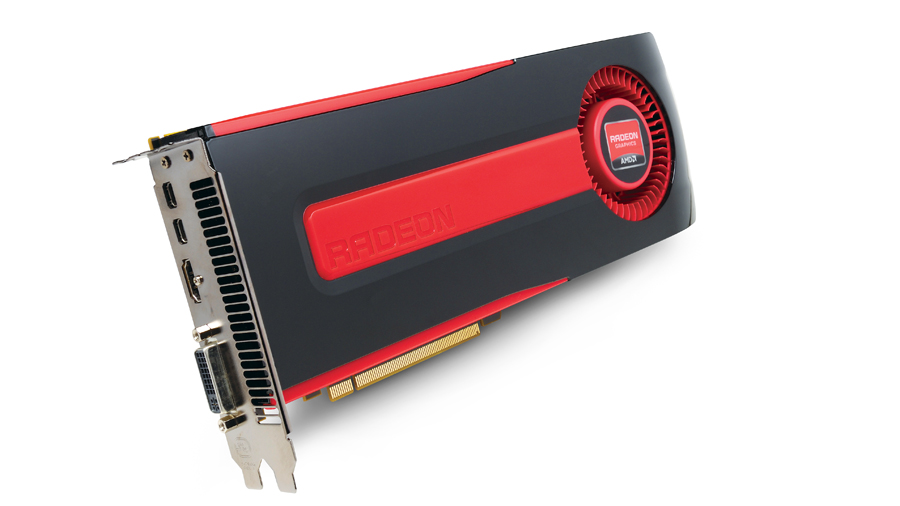Why you can trust TechRadar
At £420 ($500) the AMD Radeon HD 7970 GHz Edition is being aimed squarely at the Nvidia GTX 680, and in practically all of our benchmarks it has the edge over the green team's card. Possibly the most damning of those benchmarks though is in the two latest games in our suite of tests; DiRT Showdown and Sniper Elite V2.
Both of these titles use the DirectCompute component of DirectX to create some of their effects, like Global Illumination in the case of DiRT Showdown and compute-assisted antialiasing in Sniper Elite V2. Both of these technologies show how wise it might prove for AMD to gamble on its compute-focused architecture in terms of new game engines.
And possibly how ill-advised Nvidia was to drop that focus in the consumer variants of its Kepler architecture.
But these are only two titles, though AMD will be hoping that other developers start to use the processing capabilities of its GPUs for game-centric effects other than traditional graphics. The performance gap between AMD and Nvidia in these titles may be closed in future driver releases by the green side of the graphics divide, but our benchmarks were taken using the very latest Nvidia drivers available to us.
As it stands though, in these compute-focused game engines the Kepler architecture really suffers in comparison with the Tahiti XT GPU in the AMD Radeon HD 7970 GHz Edition. In DiRT Showdown the GTX 680 is almost half the speed of the new Radeon card.
When you look at tessellation-heavy titles like Metro 2033 and synthetic GPGPU tests like SiSoft Sandra and Lux Mark that failing is just as evident.
So it's tangibly faster than the GTX 680, but how does it fare against its older brother, the stock Radeon HD 7970?
Well, this is where things get rather stickier for the new AMD HD 7970 GHz Edition.
The price of the original HD 7970 has dropped by around £100 since launch, and isn't too far off the performance of either its GHz Edition brethren or the GTX 680 in reference trim. The original Tahiti XT though still has some overclocking chops and all it takes is a little check box and a couple of sliders in the AMD Catalyst Control Centre to get the old GPU up to the same speeds as this new GPU league leader.
With the same clockspeeds the reference card is almost the same speed in benchmarking terms as the new GHz Edition. The extra memory bandwidth of the newer card allows for slightly higher frame rates at the highest resolutions with serious AA enabled, but the differences are barely noticeable in game.
And that also means it's faster than the stock GTX 680. Obviously the Nvidia card though can still be overclocked further so it can maintain some pride in the benchmark stakes.The other snag is the likes of the Zotac GTX 670 AMP! Edition with very similar performance chops and the same significant difference in price compared with the new GHz Edition.
The weird thing then is the fact that AMD is still keeping the standard HD 7970 alive in the graphics card lineup, with the GHz Edition simply taking its place higher in the price ladder.
So while the AMD Radeon HD 7970 GHz Edition can lay claim to the fastest single-GPU card crown we still feel that AMD is somehow missing a bit of a trick. By releasing it at the same price as the GTX 680 it's challenging buyers to make the choice. By pricing it significantly below the Nvidia price tag it could have simply removed that element of choice. You would be mad to opt for a GTX 680 if the price were any different.
As it is at the top now you have to make the choice as to whether you pick up the Nvidia GTX 680 with a weakness for compute-focused gaming, but a wealth of developers happily ensconced in its 'The Way It's Meant To Be Played' program, and also having fun with its Apex suite of PhysX goodies.
The other option is this AMD Radeon HD 7970 GHz Edition with its straight performance lead and a penchant for serious computing power.
We'd rather AMD had made a stand and put this GHz Edition out seriously undercutting the Nvidia competition, but as it is this new card stands out at the top of the performance charts and is blazing new ground in the compute-heavy gaming arena.
We liked
We love the fact AMD has managed to tweak its drivers and speed dials to the extent it now has the top single-GPU card out there.
The Tahiti XT GPU also shows it's impressive compute performance chops too in this latest round - ably highlighted by the DiRT Showdown and Sniper Elite V2 benchmarks. If this is the way 3D game engines are going Nvidia will have to rethink its architectural focus.
We disliked
It may well be the fastest single-GPU card on the market, but it is still essentially just a factory overclocked card that AMD is selling as completely new addition to its graphics card lineup.
And that doesn't warrant the hefty price premium that AMD is slapping on this sped up version of its existing cards.
You could save yourself some money and get similar performance out of an original HD 7970 and overclock it a little. Or you could overclock it more...
Verdict
A great refresh of the HD 7970, but doesn't warrant the massive price premium over the original.
